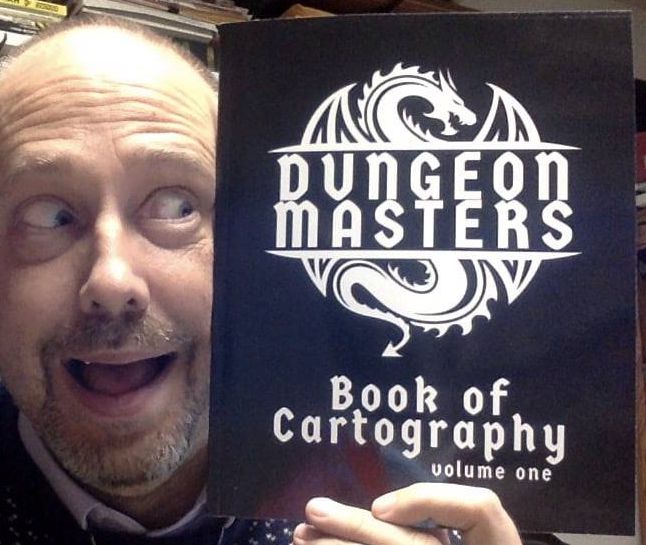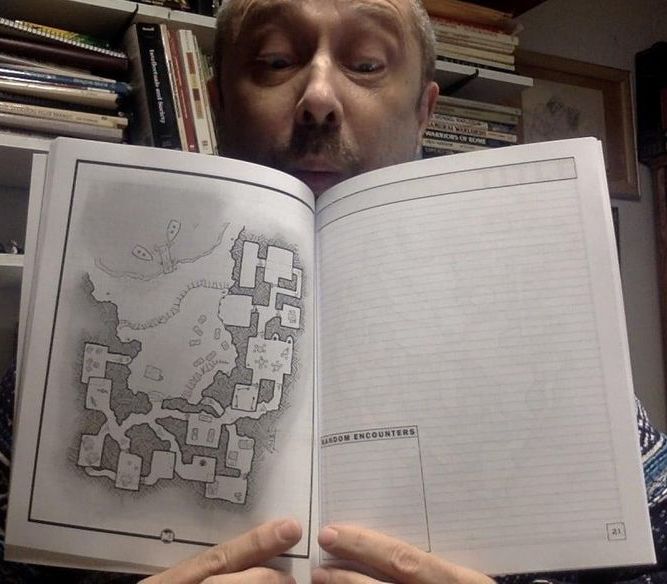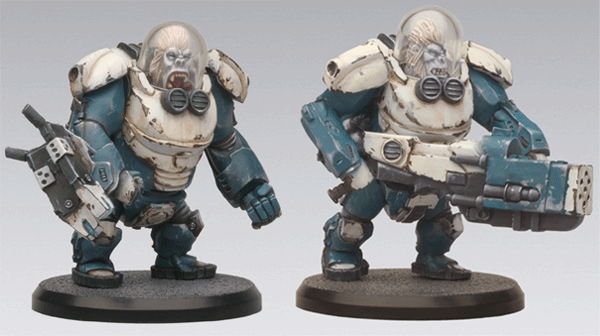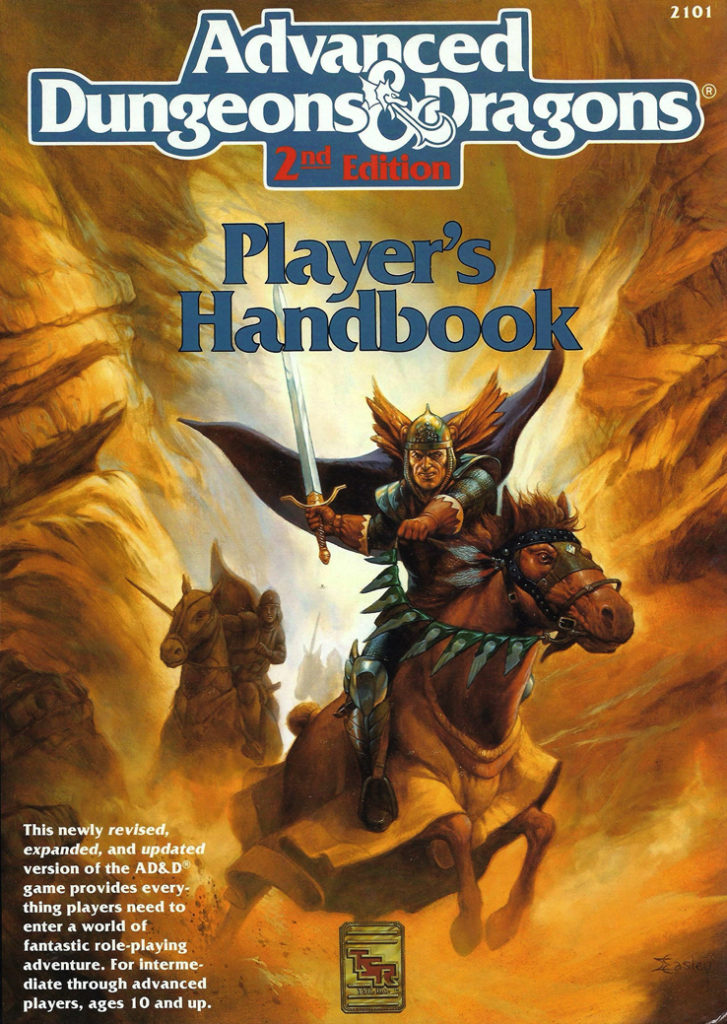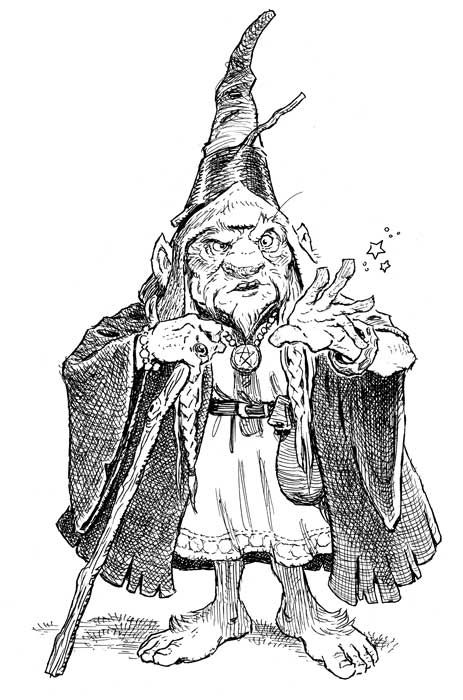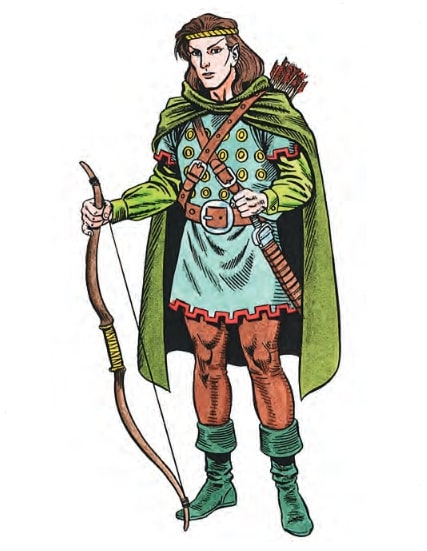In the Tanelorn Keep Player’s Guide, the player character race that’s changed the most from the standard 2E Player’s Handbook is mostly likely the gnome.
I’ve always kind of like gnomes, but I’ve got to admit that in AD&D there seems to be little to them. They’re like dwarves, but they have big noses and talk to rabbits, and, even though they’re nonmagical like dwarves, some of them are illusionists. For my gnomes, I got rid of the nonmagical-ness and played up their connections to nature and trickery. As with Deep Sashelas for the elves, I recast an AD&D gnomish deity of lesser repute into the role of creator and patron. I also took some inspiration from the treatment of halflings in the wonderful Birthright setting.
Nota Bene: The illustration accompanying this post is by the wonderfully talented Tony DiTerlizzi.
Gnomes
Diminutive and mercurial, the gnomes live in wooded hills, avoiding the conflicts and temptations of civilization. While dwarves were carved and forged from stone and metal, and elves were shaped from coral and seafoam, Baravar Cloakshadow fashioned his people from twilight and whispers.
Gnomes live in extended family clans ruled by jarls. Internecine conflict between gnomish clans is not uncommon as clans fight to control resources, avenge grudges, and honor allegiances. Against trespassers, gnomes rely on skirmishers reinforced by magic from druids and illusionists. Many tales are told about scouts or bandits venturing into gnomish lands only to be set upon by packs of enchanted beasts or to become lost in mazes of tangled thorns.
The gnomes claim as their own the rugged, forbidding mountains and wooded vales of Bebryx, that region that forms the inhospitable border between the Western Lands to the north and the wilds of Hispalis to the south.
Gnome Abilities
Your gnome PC has the abilities described on PH 22, with the following changes:
Low-Light Vision: Your gnome cannot see in total darkness, but his eyes are adapted to low-light environments. When relying on a campfire, candle, hooded lantern, torch, or the illumination of a magic weapon, the effective radius of light is doubled for a gnome. See Table 63: Light Sources, PH 118, for more information.
Proficiencies: All gnomes receive a bonus weapon proficiency that must be used to learn one of these weapons: blowgun*, khopesh, sickle, or staff sling. A gnome can use the chosen weapon regardless of class. All gnomes receive a bonus NWP that must be used to learn animal lore, direction sense, herbalism, set snares, or weather sense.
Twilight and Whispers: Your gnome is not especially resistant to magic. In fact, he has certain magical powers. A gnome can identify illusion/phantasm effects only, doing so once per day per level. This functions as a spell with an effective casting time of one round. The effects persist for one round. While using the ability, the gnome cannot see or hear anything other than illusions and phantasms.
Also once per day per level, your gnome may dimension door up to 30 yards distance to a location he can see, doing so as a move. This gnomish ability does not move through the Astral Plane, but instead occurs through the Demi-Plane of Shadow. A gnome cannot use this ability if in either direct sunlight or total darkness.
Passing through the Demi-Plane of Shadow is risky. Many creatures, most of them hostile, reside in that plane. Each time in a day that your gnome uses this ability, there is a cumulative 5% chance that some native of the Demi-Plane of Shadow “hitches” a ride back the Material Plane.
* A gnomish blowgun is a size M weapon rather than size L. Its damage, rate of fire, and range remain the same, but attack rolls with a gnomish blowgun incur a -1 penalty due to its lack of power compared to a standard blowgun.
Tags: AD&D, Tanelorn
